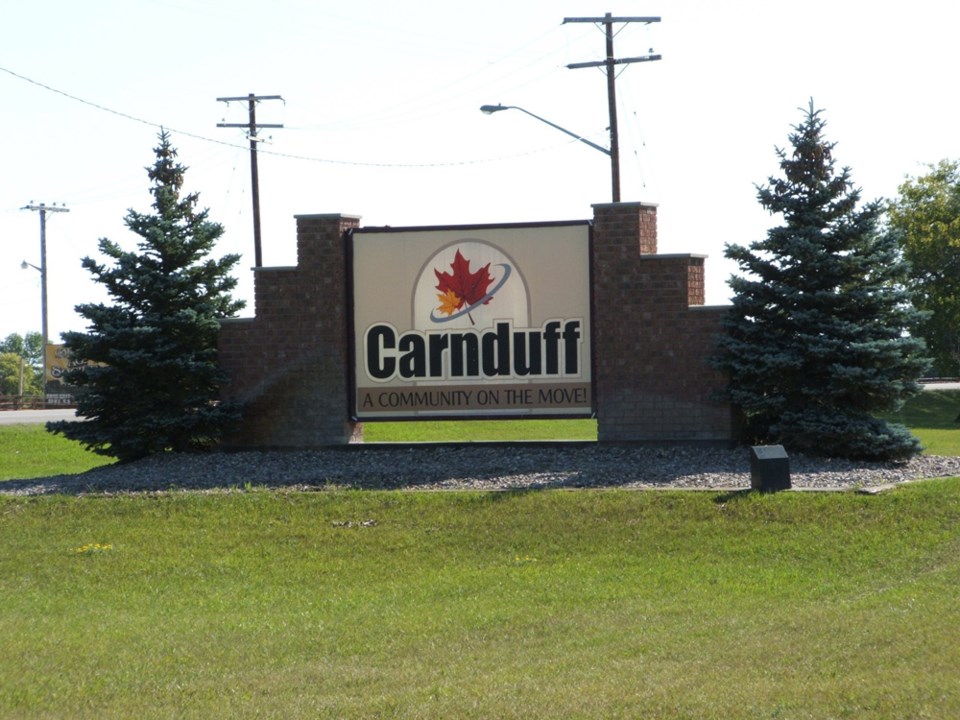CARNDUFF, SASK. — A picture of a black bear that was spotted on the outskirts of Carnduff was recently posted on Facebook by Adrienne Henderson-Gardiner.
She wrote on her page that she spotted the cinnamon-coloured bear on May 30, and the picture shows that the sighting occurred close to dusk. The animal was captured moving through an open space towards trees.
Matthew Tokaruk, the black bear biologist with the Ministry of the Environment, said that while the southeast doesn't see too many black bears' appearances, it's also not too uncommon to see them within a 100-kilometre radius from the Moose Mountains or southern Qu'Appelle Valley.
"This time of year, black bears are wandering, especially younger individuals that are dispersing and looking for new home range areas. [Carnduff] is within 100 kilometres from Moose Mountain country, so it's not terribly far from where we do have more black bears regularly. So along drainages or treed areas, it's certainly possible this time of the year to bump into bears in the southeast part of the province. It's not common, but it's not overly surprising, either," Tokaruk said.
He noted that younger bears are looking for a habitat to meet their needs, and open farmland doesn't make for a good home for them. While it's still possible, he said the chances are this bear has already moved on from the area. He also stated that while fires in the northern part of the province would have resulted in some wildlife migration within that area, they wouldn't cause mass migration to the southeastern corner of the province.
Saskatchewan is a bear country, with brown, cinnamon, blonde and black bears habitating the province, mainly its forestry regions. When they are on the move, they are sneaky, Tokaruk said. They would travel at night or use cover, so coming across one, especially in the southeast, is pretty rare. Encountering a dangerous situation with a black bear is even more rare.
But Tokaruk said there are several rules to follow to ensure everyone makes it out safe. First of all, he said, people should never feed bears.
"In fact, we have a regulation that prohibits feeding bears now, unless under a hunting or trapping license. So don't feed bears. Don't approach bears or bears with cubs. And if you encounter a bear, it's just going to be a quick glimpse, and that bear is moving the other way down the trail, away from you, that's what's going to happen almost all of the time," Tokaruk explained.
"Stay calm, don't run. And if that bear does remain in your path, make a wide detour and back away, don't look directly at the bear. Move towards some cover. And again, in most cases that bear is moving away from you, but if it isn't and is staying where it is, maybe there's a food source there. So you want to move towards some cover like your vehicle or nearby building or just something to break the line of sight.
"Don't climb a tree. Black bears are excellent climbers. And if a situation progresses, and again, this is unlikely, but if a bear is not leaving the area and starts following you, drop your backpack perhaps, or a hat, or a jacket, just something to distract the bear. That's when you want to have your bear spray out and be prepared to use it."
Since black bears don't wander into the southeast too often, people are not used to carrying bear sprays here. But Tokaruk said bear sprays are highly recommended to have when people go hiking in Moose Mountain Provincial Park, the Qu'Appelle Valley or along Saskatchewan rivers, where there is an established bear population.
"Don't be afraid to use that bear spray if a bear is approaching. This situation with a bear approaching is very, very uncommon. But in the exceptionally rare case where a black bear is threatening to contact or attack, do defend yourself. Do not play dead. These are black bears, not grizzly bears, so defend yourself. But I do want to stress how rare that situation really is."
He said the ministry hears about black bear encounters in southeast Saskatchewan about once a year. Conservation officers may hear about them a bit more often, and those are usually reports of sightings.
"It's not necessarily a problem bear, just a bear wandering. But it's open country down there, so they can be quite visible," Tokaruk said.
He added that another important part of the equation with bear safety is attractive management. A lot can be done to protect ourselves as well as bears by just managing attractives in our yards, campsites and when we're out hiking.
"That really comes down to managing food sources and things that smell like food," Tokaruk said.
He reminded people that to ensure bears don't end up anywhere close by, they should keep garbage bins in until the morning of collection, wash recyclables, keep pet food inside, remove seed and hummingbird feeders for the time when bears may be around, clean barbecues well, and don't add fish or meat to compost piles.
"Bears are highly food-motivated animals. They're very much driven by their stomachs. If there isn't food in an area, they're going to continue on," Tokaruk said.
He asked people to follow those bear safety tips.
If there's a situation with a nuisance animal, you can call the Ministry of Environment's general inquiry line at 1-800-567-4224. If there's an aggressive encounter with wildlife, you can call their tip line at 1-800-667-7561. If there's an imminent risk to human safety, which is very rare, call 911.


